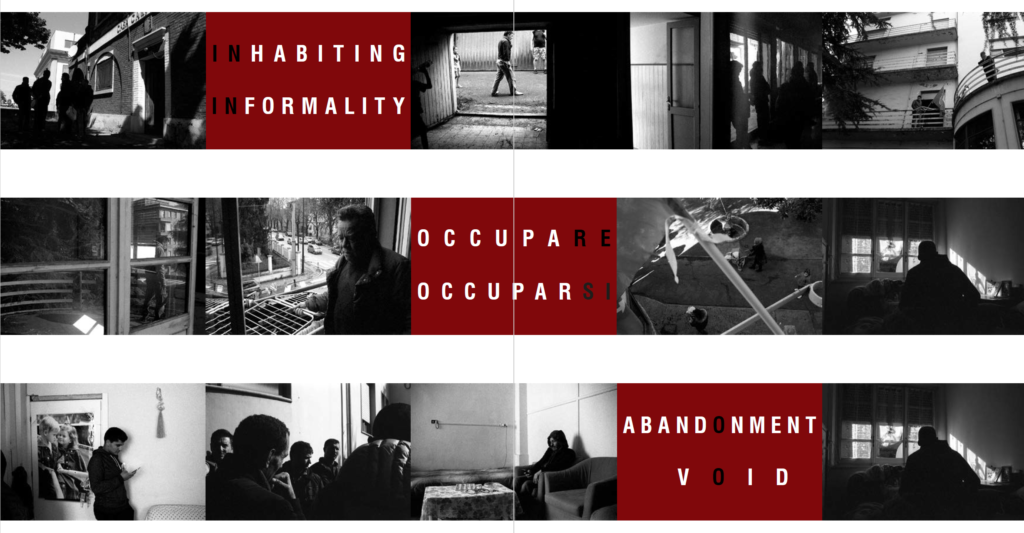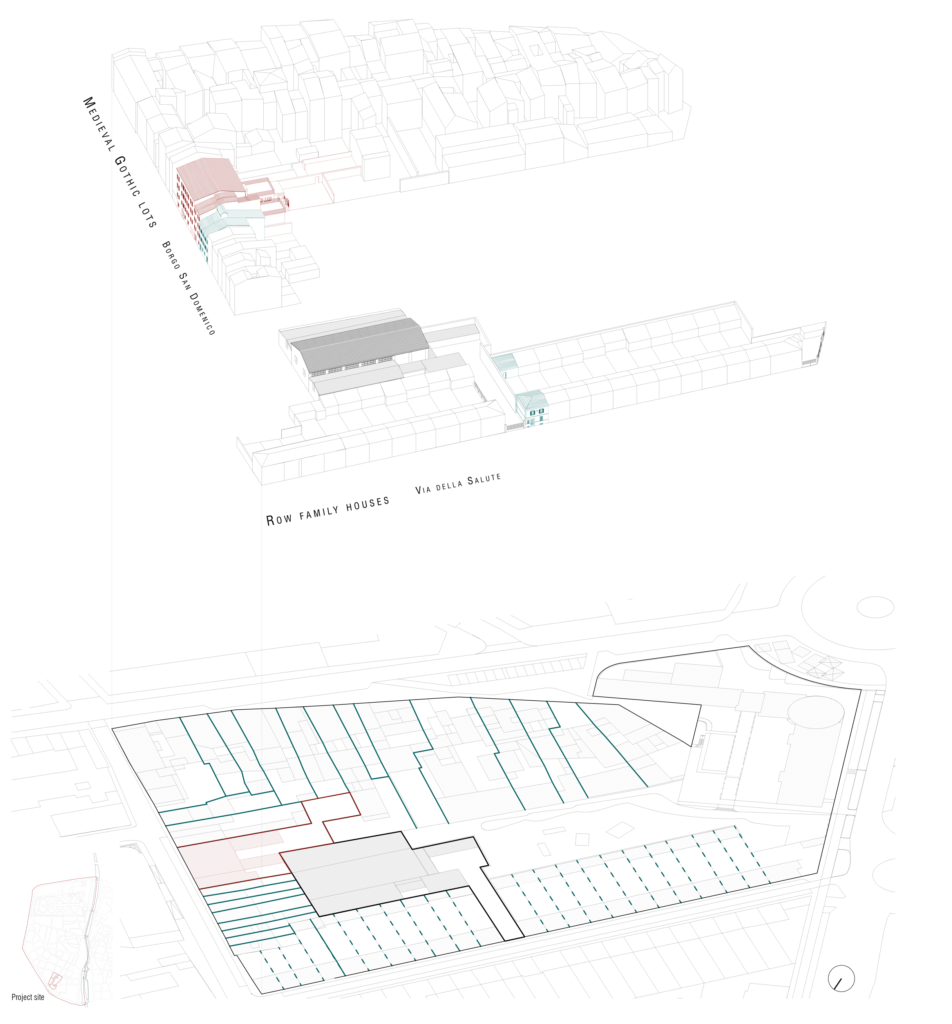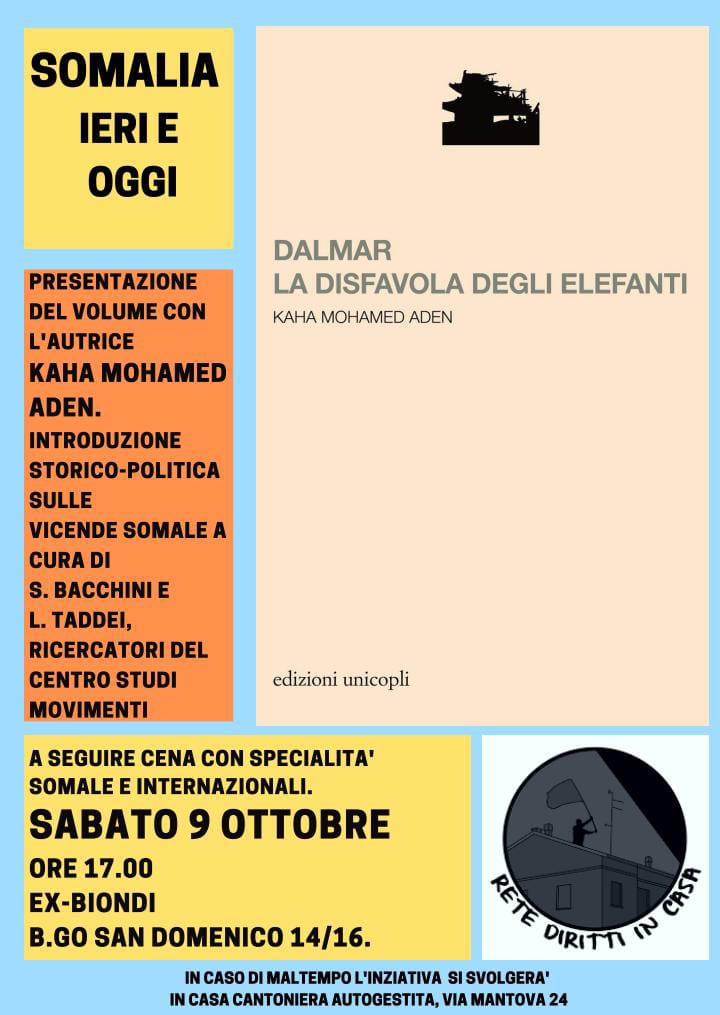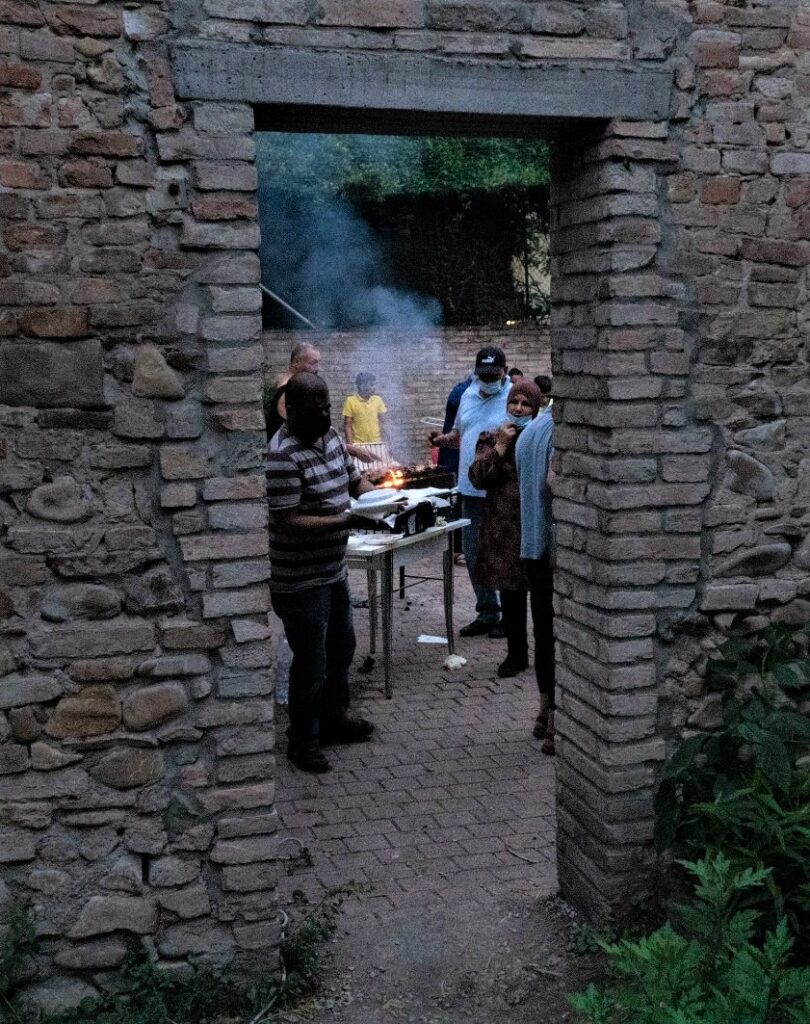Inhabiting voids: looking beyond informality in the neighbourhood Oltretorrente in Parma
Politecnico di Milano
Scuola di Architettura Urbanistica Ingegneria delle Costruzioni
Master Degree in Architectural Design and History
Relator: prof. Giulia Setti
A.A. 2020-2021
Please wait while flipbook is loading. For more related info, FAQs and issues please refer to DearFlip WordPress Flipbook Plugin Help documentation.
The research explores the emptying of central urban districts, in form of abandonment and informal occupation, and suggests an inhabiting of these voids in the neighbourhood Oltretorrente in Parma.
The case study investigates the spatial and social consequences of this peripherical neighbourhood located in the city centre, reading void as a resource and informality as a design strategy.
Originated as a marginal neighbourhood, Oltretorrente, literally ‘beyond the torrent’, developed and distinguished in opposition to the original city nucleus, progressively taking possession of its ‘oltre’ condition.
Nowadays, incorporated by the city sprawl and swinging between the will and imposition of being oltre, Oltretorrente presents spatial scars derived from morphological surgeries on its urban plot.
These voids become a theatre of informal actions, interpreting abandoned areas as vacant spaces: a marginal block is taken as a field study to observe informal answers to both public spaces and housing needs, entering the occupation of Ex-Biondi.
Informality re-opens a question around voids, challenging the reading of informality as the need for its interpretation as spatial claim.
Informal strategies are collected as an archive of possibilities to orient the process from in-formal to in-habiting.
The design proposal is drawn from informality’s claim and void mapping. A sequence of open courtyards and multifunctional nodes, organized on an interstitial industrial site, enables social possibilities of gathering.
Housing is approached considering informal users’ variety, in nucleus composition and time, experimenting with clusters’ co-housing, within the existing fabric, and a modular system, within the new volume. Flexibility is ensured overcoming the instability of temporary occupation.
Architecture can bridge users without spaces and spaces without users, developing the design project as multidisciplinary process toward inhabiting of city’s voids.
METHODOLOGY
Reading urban voids with correlated informal uses, and interpreting them in terms of demand and offer can fill the gap between the users without spaces and spaces without users.
Informal actions are a precious help to orient future interventions, as they materialize the adaptations of the spaces to a new need.
The design process, involving voids and local actors as physical and social potentialities, is strongly influenced by the context. This aspect gradually shifted the focus toward the experimentation of the process as a methodology of intervention.

01_GLOSSARY
A MULTIDISCIPLINARY APPROACH
EMBRACING COMPLEXITY
This research is a process of discovery that touched the complexity and richness of urban environment though different approaches, to acknowledge informal contribution inside architectural practice.
A focus on informality is a necessary preliminary step to orient and action in the present time: reading the complexity of the context, investigating society’s claims expressed through informality and proposing an inhabiting of city’s voids could support recognised claims and embrace inhabitants’ potentialities.
The investigation rises from and moves on the acceptance ‘stable precarity’ of contemporary context, with the unavoidable and unpredictable consequences related to it but, also, with its possibilities for relationship exploration.
The complexity of the urban context in embraced for its being not only a need-demander, but also a claim-affirmation, guiding the process of design inside an existing flourish ground.

02_CONTEXT INVESTIGATION
OLTRETORRENTE: BEING OLTRE
A CENTRAL PERIPHERY
The city of Parma is crossed by the homonymous torrent, familiarly called by the citizens ‘la Parma’. Bringing the same name, their course and evolution is entangled along the centuries. The water presence influenced geographically and socially the unfolding of inhabited settlements along its banks.
Being ‘oltre’ has been the intrinsic characteristic of the neighbourhood Oltretorrente, literally ‘beyond the torrent’ since its foundation. This oltre condition, sometimes imposed, other times defended and claimed, has characterized, along the centuries, the strong identity linked to the area and to its inhabitants.
The torrent, as a constant impenetrable edge, defined a directionality for the city development and declared an unquestionable contrast between the two sides, with crossing bridges as the only possible stitches on an unrepairable fracture, regulating and controlling the access to the ‘other’.



03_READING VOIDS_ON-SITE NEED ASSESTMENT
PEOPLE WITHOUT HOUSES, HOUSES WITHOUT PEOPLE
INFORMALITY AS NEED EXPRESSION
The research approaches “informality” as physical action in the city-space, challenging the dualism which opposes it to the formal solutions. Often the discourse around informality remains stuck on a legal base.
In fact, the word informality lacks a universally accepted definition. As informality is context-based definition, it should be considered as a helpful classification variable in time and space.
For this reason, crossing the borders of formality means entering an undefined word of parallel design practices, not regulated by the same development logics. If, for a formal process, property establishment is the founding act for the following construction steps, ‘in-formal’ practices move from construction or spatial act.
The deconstruction of its definition allows to investigate ‘informality’ as a diffused practice also in Italian territories. If informality is often catalogued as a Global South practice, pictured, in the general imagery, with big city slums and poor informal settlement, the awareness of the terminology in-definition legitimates the study of similar phenomenon also in the Global North.
The normalization of informality allows for its study as a design practice, as a strategy whose normalizations is not negotiated ‘a priory’, before the construction act, but it is derived from a ‘continuous experience exchange’. In this terms, formality and informality are not dialectic opposites, but coexisting as complementary practices of spatial action.



Please wait while flipbook is loading. For more related info, FAQs and issues please refer to DearFlip WordPress Flipbook Plugin Help documentation.
Please wait while flipbook is loading. For more related info, FAQs and issues please refer to DearFlip WordPress Flipbook Plugin Help documentation.
04_INTERPRETING VOIDS: FROM SPACE-NEED TO SPACE-CLAIM
PARTICIPATION & COMMUNITY INVOLVMENT
FROM SPACE-NEED TO SPACE-CLAIM
In English, the word home has two main translations: HOUSE and HOME. HOUSE refers to physical space, with its limits (walls) and its entrances (doors), while HOME indicates an inhabited space that does not necessarily consist of walls or doors.
In Italian, this differentiation does not exist; culturally it is difficult for us to imagine. We may be able to imagine a HOUSE that is not HOME, a house in which we do not feel at home, but it is difficult to think of a place that we feel home and that we cannot call house; a half house.
Biondi is an example of an ‘incomplete’ house: it is a HOME that cannot be a HOUSE.
The goal of these events is to tell the half-house that Biondi represents. The HOME exists in the various configurations in which the dwelling has taken shape, sneaking into the old rooms of the orphanage, adapting the chapel on the second floor to a bedroom for an entire family (with the stone holy water font next to the night table), sharing the few bathrooms in the building with people coming from different parts of the world (‘we don’t have hot water, so we are more lively than everyone’, laughs Ludmila, from Russia, who shares a bathroom with Kerim, who arrived from Morocco and is new in the house).
Entering Biondi’s building is a journey to get out of the stereotype of occupations.




05_INHABITING VOIDS
NEED OF PUBLIC SPACE
Oltretorrente, as result of heterogeneous transformations which caused a series un-planned of ‘voids’, owns a constellation of possible urban scenarios that, if disposed in a system, could become theatre for public life.
The necessity of the citizens, collected with interviews, flew in the articulation of a cultural space allowing for ‘gathering’ on different levels. The void becomes the spatial device to support a sequence of different ‘gathering spaces’, claimed by the community.
Citizens claimed a space hosting multiple activities that could not only accomplish the needs of different actors, but that could also become a recognizable place for its inhabitants.
For this purpose, the design focuses on the definition of accesses, limits, and voids, reorganizing the relations between the different pieces composing the hybrid block.
The project is conceived as a series of interlocking actions experimenting a new crossing of the block: the heterogeneity of the block, today causing its internal fractures, becomes the precondition to welcome the heterogeneity of its inhabitants. Different activities are layered over the spaces through the support given by a flexible, re-adapted and re-habilitating infrastructure, suggesting a possible and unpredictable unfolding of public life.

NEED OF HOUSING
The design strategy is directed to improve the quality of existing inhabiting without renouncing to proximity-to-services’ benefits and to the self-sustaining community created in the Ex-Biondi.
The architect becomes moderator of urban innovation processes, that include informality as resource to put into play for an effective regeneration.
To this mean, a particular attention is brought to the involvement of the inhabitants into the refurbishment of the existing fabric, instead of their momentaneous expropriation from the building. This is reached both with the common exploration of building public use, already begun through event planning, and with a by-step construction process, that could allow the permanence of people inside the building. Considering the delicate environment in which the new intervention is inserted, a request of partial moving out might be associated with eviction and, so, encounter the resistance of the residents. The construction of the new volume could host part of the inhabitants during the restoration and readaptation works of the existing fabrics.
The interventions grounds on the ‘learnings’ from informality, supporting the read potentialities and resolving the problems that could not find an answer in the adaptation process.





06_IN-CONCLUSION: BEYOND INFORMALITY
The binaries (formal-informal, rich-poor, first-third worlds, center-periphery) are dissolved to allow a complete reading of the heterogeneous and complex system of the city. Under these means, the in-conclusion of this research aims to redefine questions rather that looking for answers.
The design process, involving voids and local actors as physical and social potentialities, is strongly influenced by the context. This aspect gradually shifted the focus toward the experimentation of the process as a methodology of intervention.
In this scenario, the architect becomes curator of urban innovation of which spatial action is just a part: the design delineates a methodology where the role of the expert is the one to interlace new plots basing on the existing network of spaces and relations.
A multidisciplinary study of the city, observed though the eyes of different professionals, can detect different points where to plug in and insert the intervention, which does not necessarily correspond to a physical construction.
In-conclusion, the project is an attempt, a continuous exchange of lines with the city, constantly leveling inequalities and alimenting the dialogue of inhabiting. The architect is involved as reader and organizer of systems behind the actors moving in the space, questioning its service-role by continuously confronting with the city.

LEGGO QUINDI PENSO
L.O.F.T., Fondazione Cariparma, 2021-2022

TGR
servizio di Giulia Bondi, TG3 Emilia Romagna, 10.06.2023

inaugurazione casetta dei libri
Scambiamente, Con-tatto, Rete Diritti in Casa, 10.06.2023

presentazione 'la disfavola degli elefanti'
K.M.Aden (autrice), Centro Studi Movimenti, 9.10.2020

Presentazione Bollettino case in rivolta
Rete Diritti in Casa, Rete Solidale Noi ci Siamo Milano, 22.07.2023

incontro conoscitivo
Volontari Corte dei Miracoli, 13.02.2022











